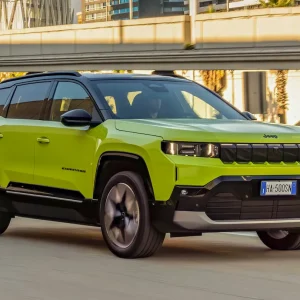It’s safe to say that Porsches are rarely at the top of a firm’s buying agenda, not least one costing a sizeable £88,967.
That trend is unlikely to change, but the German luxury brand is increasingly targeting the business market. In 2011, alongside diesel and petrol iterations, it launched the first Panamera hybrid, which managed to drop the car below the capital allowance cap at the time, emitting 159g/km.
Two years later, the facelifted luxury four-door model (with minor design tweaks) has made some impressive gains with the Panamera S E-Hybrid plug-in offering emissions of just 71g/km and fuel economy of 91mpg.
Porsche says that while the prior model was attractive to business users, the new car builds on this with congestion charge exemption along with capital allowance and benefit-in-kind advantages.
Powered by a 3.0-litre V6 supercharged engine and synchronous 70kW electric motor with 416hp, the car features an eight-speed auto and reaches 62mph in 5.5 seconds, with a top speed of 168mph. Not bad for an ‘eco-friendly’ car.
The electric drivetrain produces 95hp, double that of the outgoing hybrid, and can be charged in less than four hours with a conventional household electric supply.
In all-electric mode, the E-Hybrid can do between 11 and 22 miles. It can also reach speeds of 84mph, helped by an electric boost function, where the performance of the electric motor supports that of the combustion engine. Boosting can also be activated by kick-down, such as when overtaking.
The technology means drivers can ‘free coast’ at higher speeds; the in-car entertainment shuts off and electricity is generated by energy recovery.
A Porsche will almost always be an exceptional car to drive, and the Panamera hybrid is no exception. Its comfortable interior cocoons you in German leather-clad luxury, while the electric-only drive is impressive and lasts for longer than expected – if you drive in a non-conventional Porsche way. It does lack the thrill of its faster siblings, and its extra weight is certainly felt throughout corners, but this is still a worthy car if you have near £90k to spare and want performance and eco points.
Whole-life costs are not yet available, but should be notably lower than the outgoing version, at 174.6 pence per mile, given the drop in CO2 emissions and BIK at 5%. Like-for-like rivals are sparse in this sector: the nearest competitor is the BMW 7-series Active Hybrid M Sport, which costs £14,667 less, but offers a much higher 158g/km CO2. Meanwhile, the diesel Panamera emits 172g/km and costs 124.3ppm, although this drops to a fractionally better 166g/km in the update.
It’s a familiar story with hybrid versions of cars that the sums just don’t add up for businesses compared with the equivalent diesel offering. This is likely true here – but it might be close. Still, the outgoing Hybrid accounts for a notable 10% of Panamera sales, and the new model will only go further to strengthen registrations.
| Porsche Panamera S E-Hybrid | |
| P11D price | £88,967 |
| Model price range | £62,922-£107,903 |
| Fuel consumption | 71.0mpg |
| CO2 (tax) | 71g/km (5%) |
| Service interval | 20,000miles |
| Warranty | 3yrs/unlimited miles, battery 6yrs |
| Boot space min/max | 335/1,153 litres |
| Engine size/power | 2998cc/416hp incl. 95hp electric motor |
| Top speed/0-62mph | 184mph/5.5secs |





